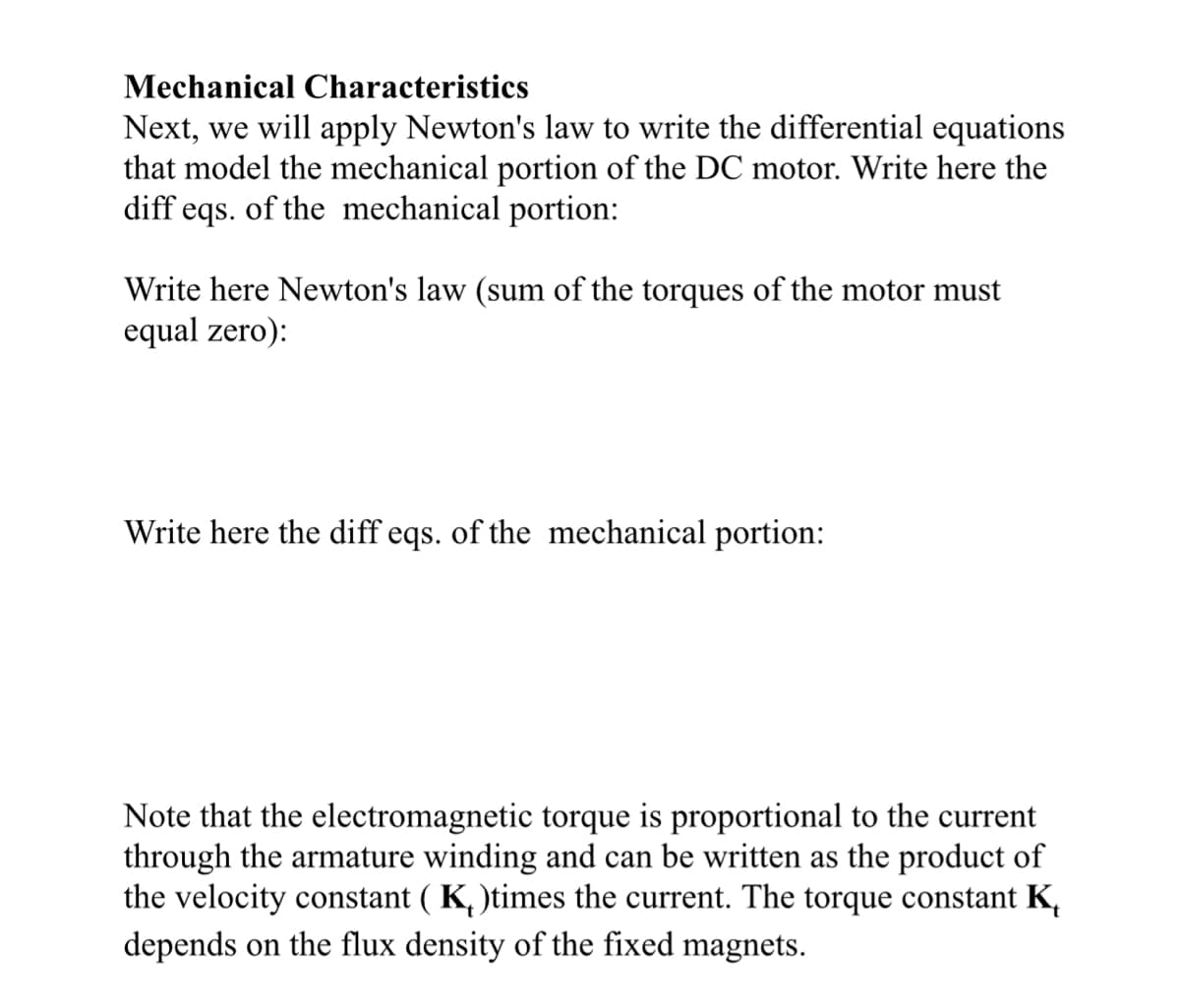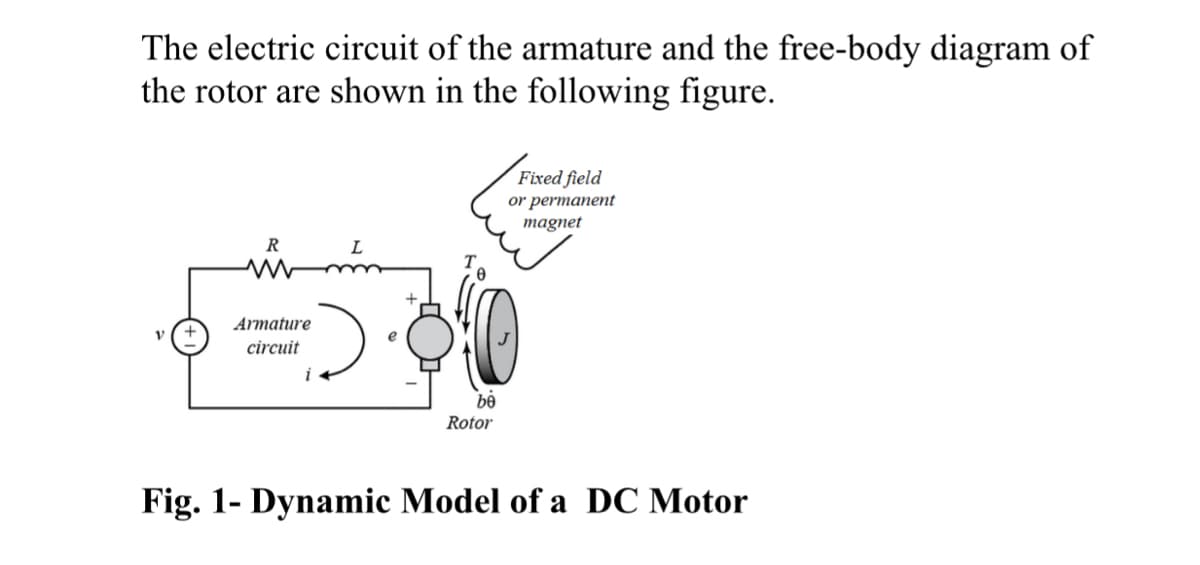Mechanical Characteristics Next, we will apply Newton's law to write the differential equations that model the mechanical portion of the DC motor. Write here the diff eqs. of the mechanical portion: Write here Newton's law (sum of the torques of the motor must equal zero): Write here the diff eqs. of the mechanical portion: Note that the electromagnetic torque is proportional to the current through the armature winding and can be written as the product of the velocity constant (K₁)times the current. The torque constant K depends on the flux density of the fixed magnets.
Mechanical Characteristics Next, we will apply Newton's law to write the differential equations that model the mechanical portion of the DC motor. Write here the diff eqs. of the mechanical portion: Write here Newton's law (sum of the torques of the motor must equal zero): Write here the diff eqs. of the mechanical portion: Note that the electromagnetic torque is proportional to the current through the armature winding and can be written as the product of the velocity constant (K₁)times the current. The torque constant K depends on the flux density of the fixed magnets.
Introductory Circuit Analysis (13th Edition)
13th Edition
ISBN:9780133923605
Author:Robert L. Boylestad
Publisher:Robert L. Boylestad
Chapter1: Introduction
Section: Chapter Questions
Problem 1P: Visit your local library (at school or home) and describe the extent to which it provides literature...
Related questions
Question
Please answer questions using the figure

Transcribed Image Text:Mechanical Characteristics
Next, we will apply Newton's law to write the differential equations
that model the mechanical portion of the DC motor. Write here the
diff eqs. of the mechanical portion:
Write here Newton's law (sum of the torques of the motor must
equal zero):
Write here the diff eqs. of the mechanical portion:
Note that the electromagnetic torque is proportional to the current
through the armature winding and can be written the product of
the velocity constant (K₂)times the current. The torque constant K
depends on the flux density of the fixed magnets.

Transcribed Image Text:The electric circuit of the armature and the free-body diagram of
the rotor are shown in the following figure.
R
ww
Armature
circuit
L
30
be
Rotor
Fig. 1- Dynamic Model of a DC Motor
i
Fixed field
or permanent
magnet
Expert Solution
This question has been solved!
Explore an expertly crafted, step-by-step solution for a thorough understanding of key concepts.
Step by step
Solved in 3 steps

Knowledge Booster
Learn more about
Need a deep-dive on the concept behind this application? Look no further. Learn more about this topic, electrical-engineering and related others by exploring similar questions and additional content below.Recommended textbooks for you

Introductory Circuit Analysis (13th Edition)
Electrical Engineering
ISBN:
9780133923605
Author:
Robert L. Boylestad
Publisher:
PEARSON

Delmar's Standard Textbook Of Electricity
Electrical Engineering
ISBN:
9781337900348
Author:
Stephen L. Herman
Publisher:
Cengage Learning

Programmable Logic Controllers
Electrical Engineering
ISBN:
9780073373843
Author:
Frank D. Petruzella
Publisher:
McGraw-Hill Education

Introductory Circuit Analysis (13th Edition)
Electrical Engineering
ISBN:
9780133923605
Author:
Robert L. Boylestad
Publisher:
PEARSON

Delmar's Standard Textbook Of Electricity
Electrical Engineering
ISBN:
9781337900348
Author:
Stephen L. Herman
Publisher:
Cengage Learning

Programmable Logic Controllers
Electrical Engineering
ISBN:
9780073373843
Author:
Frank D. Petruzella
Publisher:
McGraw-Hill Education

Fundamentals of Electric Circuits
Electrical Engineering
ISBN:
9780078028229
Author:
Charles K Alexander, Matthew Sadiku
Publisher:
McGraw-Hill Education

Electric Circuits. (11th Edition)
Electrical Engineering
ISBN:
9780134746968
Author:
James W. Nilsson, Susan Riedel
Publisher:
PEARSON

Engineering Electromagnetics
Electrical Engineering
ISBN:
9780078028151
Author:
Hayt, William H. (william Hart), Jr, BUCK, John A.
Publisher:
Mcgraw-hill Education,